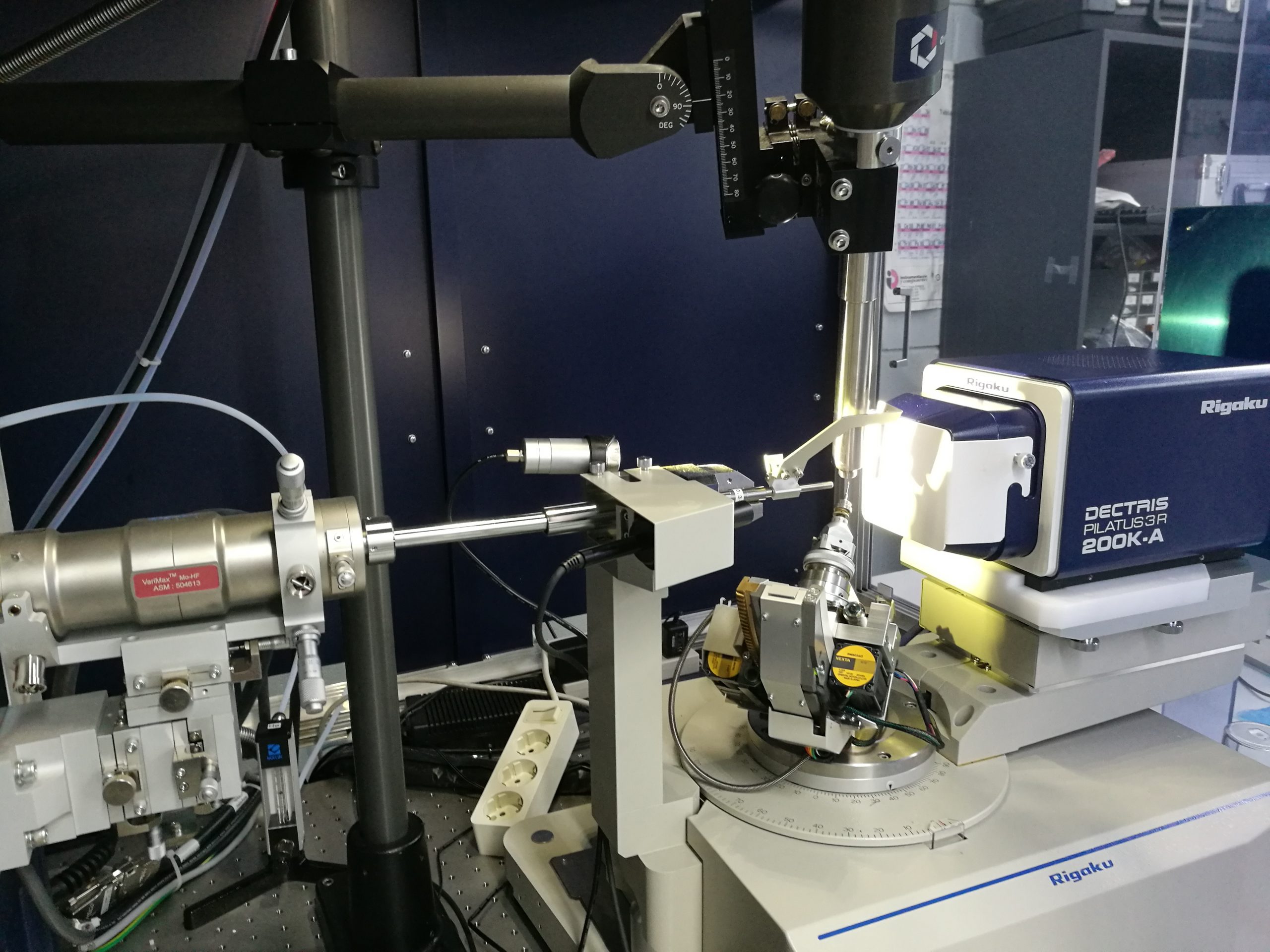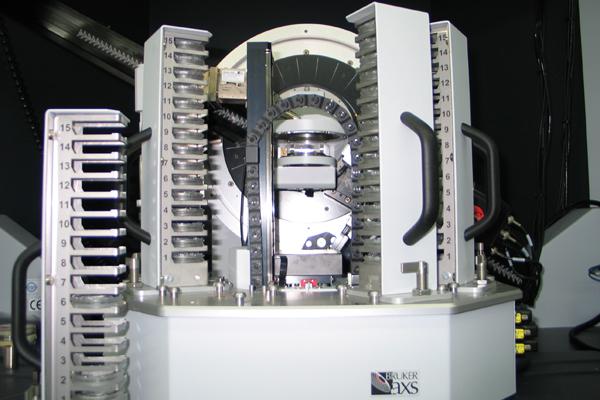X-ray diffraction
GINYS-ICIQ-002
The X-ray Diffraction Unit collects all the techniques that are based on X-ray diffraction on crystalline solids. It supports the characterization of chemical compounds that are available in crystalline state.
There are two main techniques available: powder X-ray diffraction (PXRD) and single crystal X-ray diffraction (SCXRD).
The PXRD technique is basically used as a primary screening method and offers a fingerprint of each different crystalline form analyzed. This method provides a basic service to all ICIQ users with a system that allows easy sample preparation and short measurement time for a large number of samples.
The SCXRD technique offers a three-dimensional atomic-scale structure of a selected crystalline compound. This method is highly specialized with a combined system from high performance components. The aim in this case is to give direct support to research groups by solving problems at all levels of difficulty. This support includes crystallization of problematic samples, preparation of poor quality crystals, and refinement of worrying data sets.
Services
SINGLE CRYSTAL ELECTRON DIFFRACTION
Structure of nanocrystals – Indexing – Measurements from 100 k to 1000K
X-RAY SINGLE CRYSTAL DIFFRACTION
Absolute Configuration – Crystallization of compounds – Inert Conditions – 100K to 500K – Cu and Mo radiation
POWDER DIFFRACTION
Humidity/Temperature Ramp Rate – SAXS -GIXRD – Kα1
Equipment
- D8 Advance Series 2Theta / Theta powder X-ray diffraction system using CuKa radiation in transmission geometry. The system is equipped with a VÅNTEC-1 single photon count PSD, a germanium monochromator, a ninety-position automatic shift sampling stage, fixed divergence slots, and a radial sill. Available programs: Data collection with DIFFRAC plus XRD Commander V.2.4.1 and evaluation with EVA V.12.0. and TOPAS V.6.
- Rigaku Single Crystal rotating anode: Rigaku diffractometer equipped with a Pilatus 200K area detector, a Rigaku MicroMax-007HF rotary microfocus anode with MoK a radiation, Confocal Max Flux optics and a low temperature Oxford Cryosystems Cryostream 700 plus device (T = 90-500 K). Available Programs: – CrystalClear-SM Expert 2.1 b29 – CrysAlisPro 1.171.39.46,
- Bruker Single Crystal DUO: Bruker Apex DUO diffractometer equipped with a 4-axis Kappa goniometer, an APPEX 2 4K CCD area detector, an E025 IuS microfocus source with Mo K a radiation, an E025 IuS microfocus source with Cu K radiation a,
- Quazar MX Multilayer Optics as a monochromator and a low temperature Oxford Cryosystems Cryostream 700 plus device (T = 90-500 K). Available programs: – Data collection with APEX II version v2013.4-1. Data reduction with Bruker SAINT version V8.37A. – Correction of absorption with SADABS v2016-2 and TWINABS v2012 / 1. – Measurements of X-ray diffraction in powder and variable temperature with the utility in Pilot: XRD 2 Eval (Bruker AXS).
- General programs available / used for the processing of structures, solution and improvement: – SHELXT; V2014 / 4 – SIR2014 v17.10 – SHELXle – SHELXL-2018/3 – Crystals – Wingx Version 2014.1 – Plato – MoPro.05i v1
Staff
Dr. Marta Martínez | mmartinez@iciq.es
| 977 920 200 (ext. 311)
Dr. Eduardo C. Escudero-Adán | eescudero@iciq.es
| 977 920 238 | ORCID
Dr. Jordi Benet | jbenet@iciq.cat
| 977 920 200 (ext. 303)






